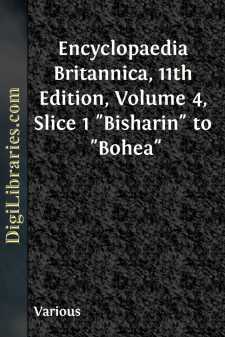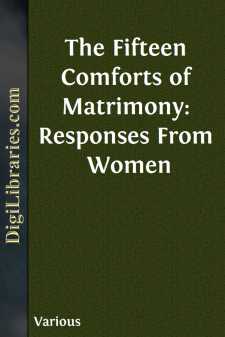Categories
- Antiques & Collectibles 13
- Architecture 36
- Art 48
- Bibles 22
- Biography & Autobiography 813
- Body, Mind & Spirit 142
- Business & Economics 28
- Children's Books 17
- Children's Fiction 14
- Computers 4
- Cooking 94
- Crafts & Hobbies 4
- Drama 346
- Education 46
- Family & Relationships 57
- Fiction 11829
- Games 19
- Gardening 17
- Health & Fitness 34
- History 1377
- House & Home 1
- Humor 147
- Juvenile Fiction 1873
- Juvenile Nonfiction 202
- Language Arts & Disciplines 88
- Law 16
- Literary Collections 686
- Literary Criticism 179
- Mathematics 13
- Medical 41
- Music 40
- Nature 179
- Non-Classifiable 1768
- Performing Arts 7
- Periodicals 1453
- Philosophy 64
- Photography 2
- Poetry 896
- Political Science 203
- Psychology 42
- Reference 154
- Religion 513
- Science 126
- Self-Help 84
- Social Science 81
- Sports & Recreation 34
- Study Aids 3
- Technology & Engineering 59
- Transportation 23
- Travel 463
- True Crime 29
Encyclopaedia Britannica, 11th Edition, Volume 4, Slice 1 "Bisharin" to "Bohea"
by: Various
Categories:
Description:
Excerpt
BISHÂRÎN (the anc. Ichthyophagi), a nomad tribe of African “Arabs,” of Hamitic origin, dwelling in the eastern part of the Nubian desert. In the middle ages they were known as Beja (q.v.), and they are the most characteristic of the Nubian “Arabs.” With the Abâbda and Hadendoa they represent the Blemmyes of classical writers. Linguistically and geographically the Bishârîn form a connecting link between the Hamitic populations and the Egyptians. Nominally they are Mahommedans. They, however, preserve some non-Islamic religious practices, and exhibit traces of animal-worship in their rule of never killing the serpent or the partridge, which are regarded as sacred.
BISHOP, SIR HENRY ROWLEY (1786-1855), English musical composer, was born in London on the 18th of November 1786. He received his artistic training from Francisco Bianchi, and in 1804 wrote the music to a piece called Angelina, which was performed at Margate. His next composition was the music to the ballet of Tamerlan et Bajazet, produced in 1806 at the King’s theatre. This proved successful, and was followed within two years by several others, of which Caractacus, a pantomimic ballet, written for Drury Lane, may be named. In 1809 his first opera, The Circassian’s Bride, was produced at Drury Lane; but unfortunately the theatre was burned down after one performance, and the score of the work perished in the flames. His next work of importance, the opera of The Maniac, written for the Lyceum in 1810, established his reputation, and probably secured for him an appointment for three years as composer for Covent Garden theatre. The numerous works—operas, burlettas, cantatas, incidental music to Shakespeare’s plays, &c.—which he composed while in this position, are in great part forgotten. The most successful were—The Virgin of the Sun (1812), The Miller and his Men (1813), Guy Mannering and The Slave (1816), Maid Marian and Clari, introducing the well-known air of “Home, Sweet Home” (1822). In 1825 Bishop was induced by Elliston to transfer his services from Covent Garden to the rival house in Drury Lane, for which he wrote with unusual care the opera of Aladdin, intended to compete with Weber’s Oberon, commissioned by the other house. The result was a failure, and with Aladdin Bishop’s career as an operatic composer may be said to close. On the formation of the Philharmonic Society (1813) Bishop was appointed one of the directors, and he took his turn as conductor of its concerts during the period when that office was held by different musicians in rotation. In 1830 he was appointed musical director at Vauxhall; and it was in the course of this engagement that he wrote the popular song “My Pretty Jane.” His sacred cantata, The Seventh Day, was written for the Philharmonic Society and performed in 1833. In 1839 he was made bachelor in music at Oxford. In 1841 he was appointed to the Reid chair of music in the university of Edinburgh, but he resigned the office in 1843....












